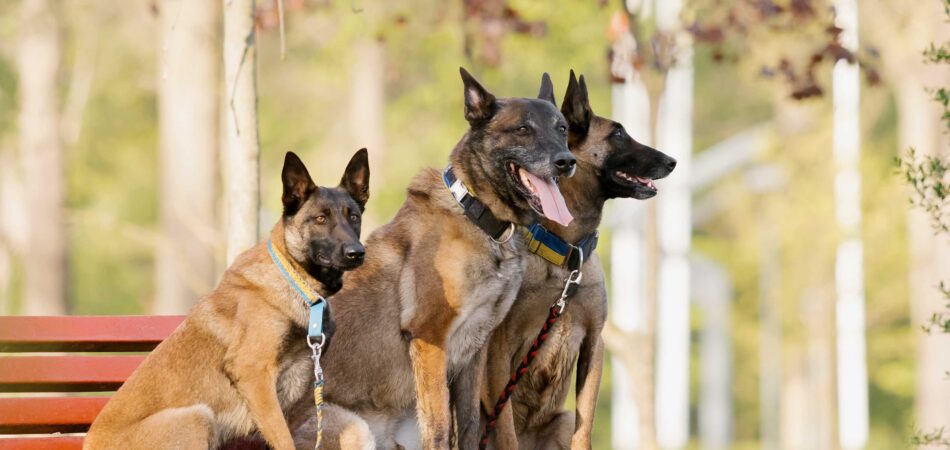






Looking for the cheapest guard dog? Breeds like the German Shepherd, Belgian Malinois, and Rottweiler offer strong protection at different price points. Compare costs, training needs, and ownership value before choosing the right fit for your home security.
It’s a deceptively simple question. Like, there’s a single number that decides it. But we ask it anyway. Because we live in a world where budgets matter and resources are finite. Where people want safety, and they want it without breaking the bank.
So let’s take the question seriously. Which is the cheapest guard dog?
Prices range. Value is subjective.
You could Google it and find a list. You’ll see breeds like the American Bulldog, the Belgian Malinois, or maybe even the Rottweiler or Doberman if you’re lucky.
Back to numbers….
Adoption fees can run as low as $500—or even less in some cases.
For puppies, the starting point is typically around $1,500, though that number shifts depending on the breed, the breeder’s reputation, and your location.
Additional costs, such as specialized training with a certified dog trainer, can add up significantly, often between $100 to $200 per hour.
Meanwhile, shelter dogs may come free, but expenses for behavior correction, veterinary care, and training can escalate.
So, when we talk about “cheap,” we must ask ourselves—cheap in what way?
Let’s start with the practical.
 Belgian Malinois
Belgian MalinoisBred for herding and now used in elite military units and police departments, these dogs are intelligent, loyal, and ridiculously driven.
Their mental stamina and physical endurance make them one of the most effective guard dogs.
But that drive comes with a caveat: you have to train them. This is not a “leave them in the backyard” kind of dog. A bored Malinois will turn your living room into an obstacle course—or worse.
That said, they’re relatively affordable for what they are. While the initial purchase price is modest compared to other protection breeds, the real cost is in the training.
Without it, you’re not unlocking their full potential—and with it, you’re investing in a dog that could rival the abilities of a human security guard.
A fully trained Belgian Malinois will cost between $75,000 and $200,000.
They’re also fairly low-maintenance in terms of grooming and feeding, especially considering their size and workload. No fancy grooming bills, no complicated diets—just solid, consistent care.
Finding a puppy, though? That’s a challenge. Demand is high, especially for bloodlines suitable for protection work. If you’re going this route, expect to wait—or pay a premium.

Dobermans have earned their spot in the guard dog hall of fame. Sleek, strong, and unmistakably alert, these dogs are known for being fiercely loyal to their families and intimidating to anyone with bad intentions.
They don’t need a ton of frills—just strong foundational training, a balanced diet, and consistent exercise.
And while you’ll want to invest in training early on (to channel that sharp intelligence and strong will), the ongoing maintenance is relatively straightforward.
They’re not high-maintenance in the grooming department either, which keeps long-term costs manageable.
Plus, finding a Doberman puppy? Way easier than trying to track down a working-line Malinois. This breed is popular, widely bred, and accessible.
A highly trained Doberman Pinscher with a strong show record will cost between $80,000 and $200,000.
That said, these animals thrive when they’re mentally stimulated and physically exercised. They want a job. They want purpose. And if you don’t give them one, they’ll make one up—and you might not like what they choose.
They also don’t live as long as some other breeds, which can slightly lower lifetime costs—but it’s a bittersweet trade-off.

They’re large, yes—but surprisingly low-maintenance for their size. Most of your upfront cost will go into training, especially if you’re raising one as a first-time owner. A highly trained German Shepherd will cost between $50,000 and $250,000.
These dogs are sharp and intuitive, but they need structure. With the right training foundation, a German Shepherd becomes more than just a pet—they become a reliable, responsive partner.
Health-wise, they can rack up costs later in life due to breed-specific issues like hip dysplasia, so it’s worth factoring in long-term vet care and maybe even pet insurance. But overall? They’re one of the most value-packed guard dogs you can own.
Puppies are everywhere. This is one of the most popular breeds in the U.S., which makes them easy to find—but it also means quality varies wildly.
If protection is your end goal, you’ll want to avoid backyard breeders and focus on working or show-line bloodlines with good health history.
Considering this breed? Explore our available German Shepherds for sale HERE

But behind that imposing exterior is a surprisingly affectionate and loyal companion—one that bonds deeply with their people and takes their role seriously.
Their size alone is a deterrent, but the real magic happens when they’re trained. A well-socialized Cane Corso is calm, confident, and controlled.
Because of their bulk, you’ll spend more on food and preventive vet care compared to smaller breeds. Hip and joint issues are something to watch for.
But overall, they’re fairly low-fuss if you keep up with the basics: consistent training, high-quality nutrition, and regular exercise.
Puppies are moderately easy to find. Their popularity has climbed over the last decade, and responsible breeders are increasingly accessible.
Just avoid trendy breeders pushing “extra-large” Corsos or overly aggressive lines—they might look impressive, but temperament and structure matter more.
A fully trained Cane Corso typically ranges from $60,000 to $120,000 based on the dog’s pedigree, training level, and the breeder’s reputation.

They’re big. They’re strong. And when trained well, they’re formidable protectors. But unlike some of the more “eager to please” breeds, Akitas are independent thinkers. They don’t blindly follow commands.
Training is non-negotiable. Not just for obedience, but for socialization. Akitas can be dog-aggressive and aloof with strangers.
Without proper structure, that confidence can turn into unpredictability. But with the right owner—calm, consistent, and experienced—they’re unmatched in loyalty.
You’ll spend a fair bit on food, grooming, and preventive healthcare. Add in the challenge of finding a quality puppy, and you’ve got a breed that requires commitment.
Now, if you decide to purchase a fully trained Akita, you can expect to spend between $80,000 and $250,000.

Their confidence is quiet, not showy. And when they take a stance between you and a threat, that presence alone is often enough.
They’re powerful dogs, no question. But they’re also incredibly affectionate with their families—loyal to the core and shockingly gentle with the people they love.
Now, let’s talk practicality. Yes, they eat a lot. And yes, their size means regular vet visits and monthly preventatives add up fast.
But they’re relatively low-maintenance in grooming and don’t need a designer diet or a spa day every month.
What they do need is structure. A solid foundation in training is essential because they can take over if leadership is lacking.
The good news? You won’t struggle to find a puppy. Rottweilers are popular, widely bred, and available in most regions. But as always, quality matters—especially with a dog this strong.
For a guard dog that’s all business when it counts—and all heart when it doesn’t—the Rottweiler delivers.
We have fully trained Rottweilers available for sale, ready to join your family. Check our selection here.

These dogs don’t bark much. They don’t need to. Their sheer size and presence tend to do the talking.
A trained Bullmastiff will stand its ground like a sentry and respond to threats with quiet intensity rather than chaos. I call them the silent bouncers of the dog world.
Cost-wise, they’re on the higher end, but not outrageous considering the size. Feeding a 120-pound dog isn’t cheap, and their short but dense coats still need some basic upkeep.
Add in the usual vet visits, and your monthly costs start creeping up. But for what you’re getting—a serious deterrent that blends seamlessly into family life—it’s a reasonable tradeoff.
The challenge is finding a puppy. Bullmastiff litters aren’t common, and when they do come up, they’re often claimed fast or priced high due to lineage.
You’d have to pay between $100,000 and $250,000 for a well-bred Bullmastiff,
The real cost reflects two things: selective breeding and extensive training.
You’re paying for generations of genetic refinement and months (or years) of behavioral conditioning, grooming, testing, and rigorous training.
Beyond the purchase, here are just a few things that drive up the total cost:
To maintain peak performance, guard dogs often require ongoing training, scenario drills, and refreshers—especially if they’re in active duty or home protection roles.
You can’t leave this up to the local puppy school. You’ll need certified trainers who specialize in protection work—and their hourly rates often reflect years of experience and risk.
Some even offer board-and-train programs that cost thousands over several weeks.
Working dogs experience more physical wear and tear. That means regular joint checks, preventative screenings, dental work, and breed-specific care.
You can’t feed a sports car low-grade fuel. These dogs require high-quality, high-protein diets with added supplements to support muscle development, joint health, and cognitive function.
Depending on the dog’s size, that alone could cost you $80–$150 a month.
Depending on your region and how the dog is classified, you might need specialized liability coverage—especially if the dog is trained in bite work.
A single emergency surgery or long-term treatment could easily cost thousands. That’s why many owners opt for pet insurance.
Purebreds can be more prone to genetic conditions, but don’t be fooled—mixed breeds get sick too. Cancer, joint issues, heart conditions—these don’t discriminate.
You can check out alternatives to traditional pet insurance—like subscription-based healthcare memberships or vet care reimbursement programs. Some offer better value, especially for younger dogs.
In addition to the aforementioned costs, owning a guard dog may also require specific licenses or permits, depending on your location and local regulations.
Many jurisdictions have laws governing the ownership of certain breeds or working dogs, especially those trained for protection. Obtaining these licenses often involves fees, background checks, and possibly proof of training or certifications.
Failure to comply with licensing requirements can result in fines or restrictions, so it’s essential to research your area’s laws before bringing a guard dog into your home.
You could get a free dog from a friend’s litter. You could adopt an adult from a rescue. But if you don’t train, socialize, and invest in that dog, you won’t have a protector. You’ll have a liability.
Guard dogs aren’t born that way. They’re shaped, coached, and trained into their strength for months or years.
Let that sink in.
And no, this doesn’t mean every dog can or should be a guard dog. Some breeds are too soft. Some are too aloof. Some don’t have the drive. And even within the right breeds, temperament varies from dog to dog.
So, don’t fall into the trap of assuming any dog can “learn on the job.” That kind of thinking can get people hurt—and it’s not fair to the dog either.
Still want the cheapest guard dog?
It’s tempting to look at upfront costs. To compare price points, vet fees, and training packages.
But price doesn’t always mean best.
What matters more is fit.
The cheapest guard dog for you might not be the same for someone else. You might not need military-grade defense. You might just need a dog that notices when something’s off. Who stands a little taller when someone approaches your children.
That kind of awareness doesn’t come from luck. It comes from alignment—between the dog’s instincts and your lifestyle, between their training and your expectations.
So ask yourself: what are you buying? A bargain? Or peace of mind?
You’re choosing a partner. So, before anything else, you need clarity—on your needs, lifestyle, and environment.
Do you live alone? Have kids? Travel a lot? Work remotely? Need property protection? Personal security? Each situation calls for different traits, and finding a dog that fits your requirements is crucial.
But choosing the right dog is only half the equation. The other half? Being the right owner.
Guard dogs come with their challenges and responsibilities. They require training, socialization, leadership, and a commitment to ongoing care.
And that’s where most people get stuck—because it’s a lot to take on alone.
At Vanguard Protection Dogs we don’t hand you a leash and wish you luck.
We stay in the picture—offering ongoing support, expert guidance, and real-time solutions to help you and your dog thrive together. Whether you need a tune-up on training, behavior insights, or help managing new situations, the Vanguard team is always a call away.
Still unsure which breed—or individual dog—is right for you?
We’ll walk you through your options, answer your questions, and help you make a decision that’s right for you, your family, and your future.